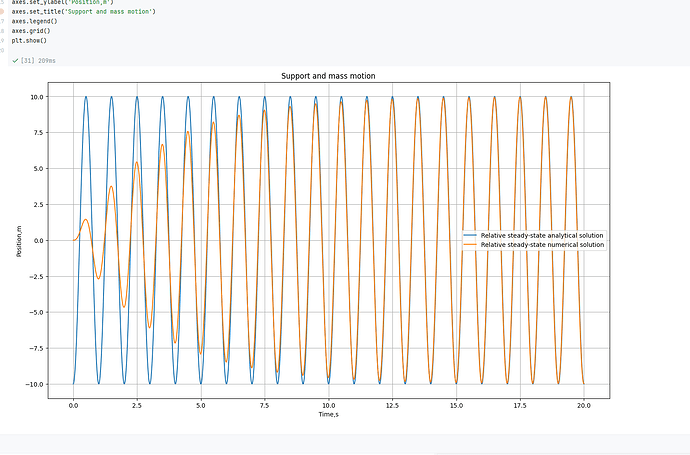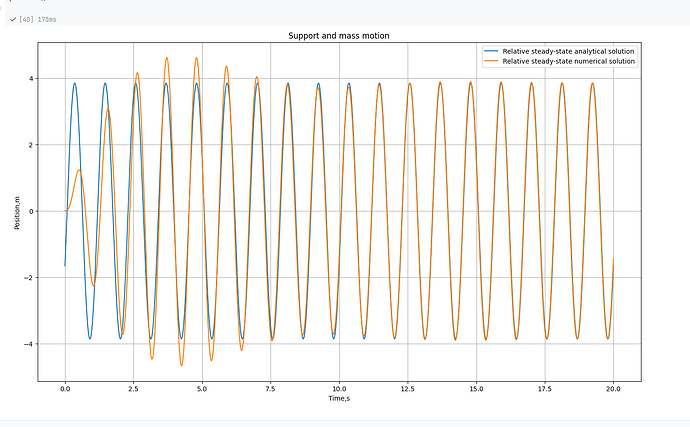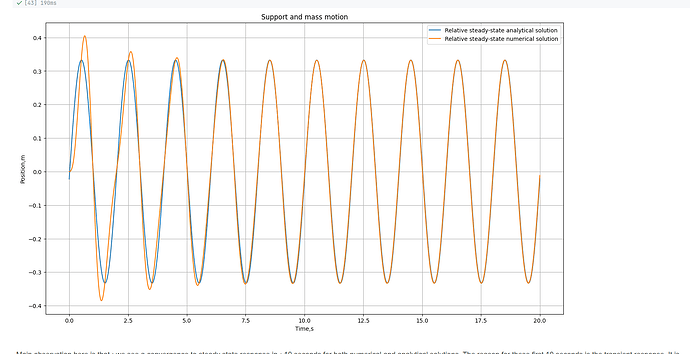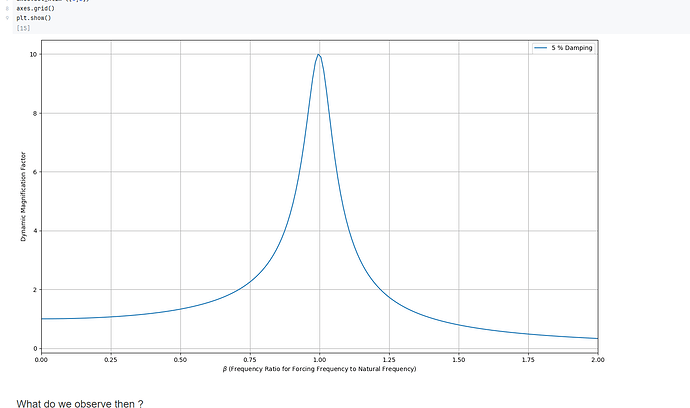Questions and discussion for this lecture live here. Fire away by hitting Reply below ![]()
Hello Sean
Great lecture, as always, thanks. I must have missed something from previous explanations, but I expected that if the natural frequency of the SDoFS and of the support motion are the same (in this case = 1), it would resonante with the structure, as you say when you write the support motion parameters down and that would mean that the displacement of the system would peak. However, I’ve tried various values for fb and the displacement is always larger when fn ≠ fb. What am I missing here?
Hey @josbarort1 - apologies for the delay in replying this this.
The expected behaviour is for maximum response to be observed when fb=fn (especially for low levels of damping (see discussion of transmissibility in lecture 7). When running the code that we wrote in this lecture, this is what we observe.
Have you downloaded the code for lecture 8 and run it locally or are you referring to code that you’ve written yourself?
If you’re observing anomalous behaviour - compare your code to the downloadable version. Feel free to report back with an update or if I’ve misinterpreted anything in your question.
Seán
@josbarort1 hi josh, if i understood your question correctly, i wanted to involve in discussion: @Sean please correct me if i misinterpret or inform josh in a wrong way:
As far as i understood, you meant @josbarort1 that we should have seen resonance once the beta= 1 =omega_bar / omega_n., and actually it occurs and it occurs exactly as shown in the below diagrams where B=1 we see 10 times bigger effect right ? So, actually we do. Maybe there is a small parameter problem in your code. However, let me tell you what i mean by that ![]()
this is the case once B=1, and as you can see the displacement is 10.0 m. and continious in resonance because force is still being applied.
and this is the case once B= 0.9, as you can see the effect on displacement is decreasing.
and this is the case once B= 0.5, we see much more smaller displacements here, as expected, right ?
and this is the dynamic amplification factor, which is kinda proving that 10.0 m of displacement shall be expected
i hope that i could helped,
Cheers,
Burak
Thanks for that @m.burakcakir33
S
Thank you both, you’re totally right. I’d misinterpreted the graphs.



